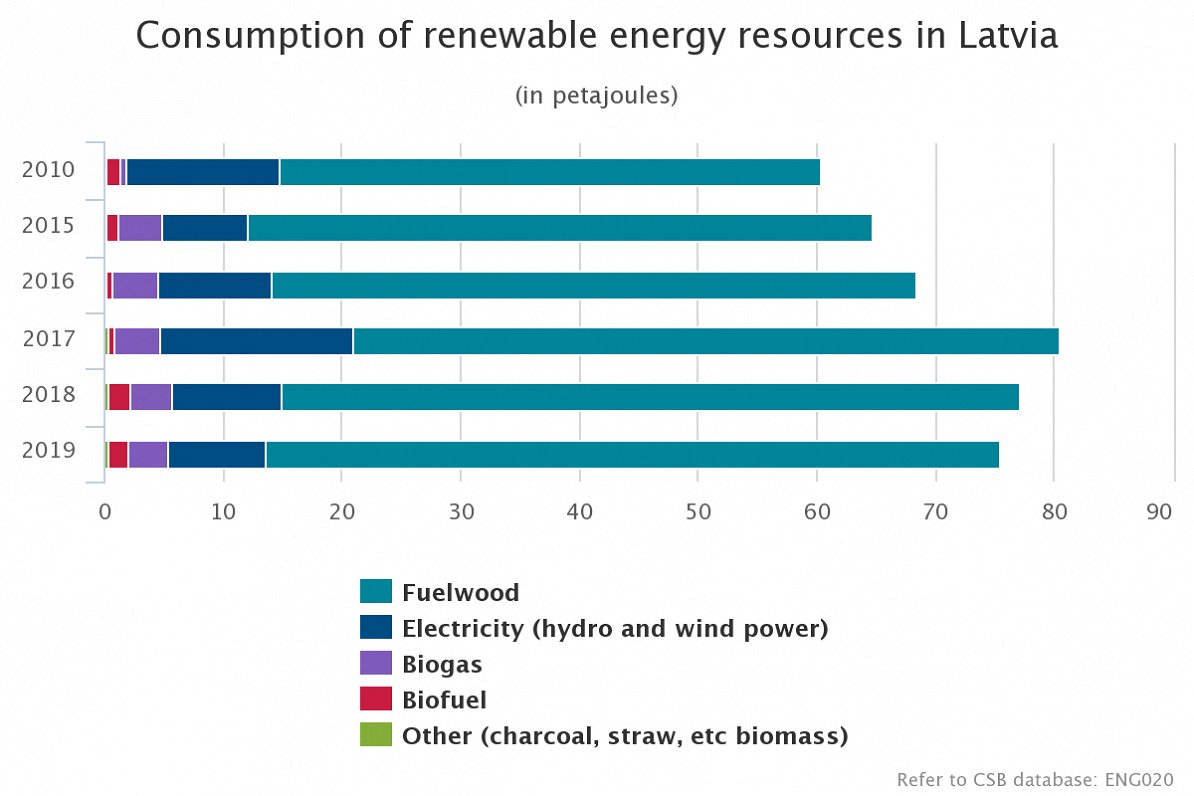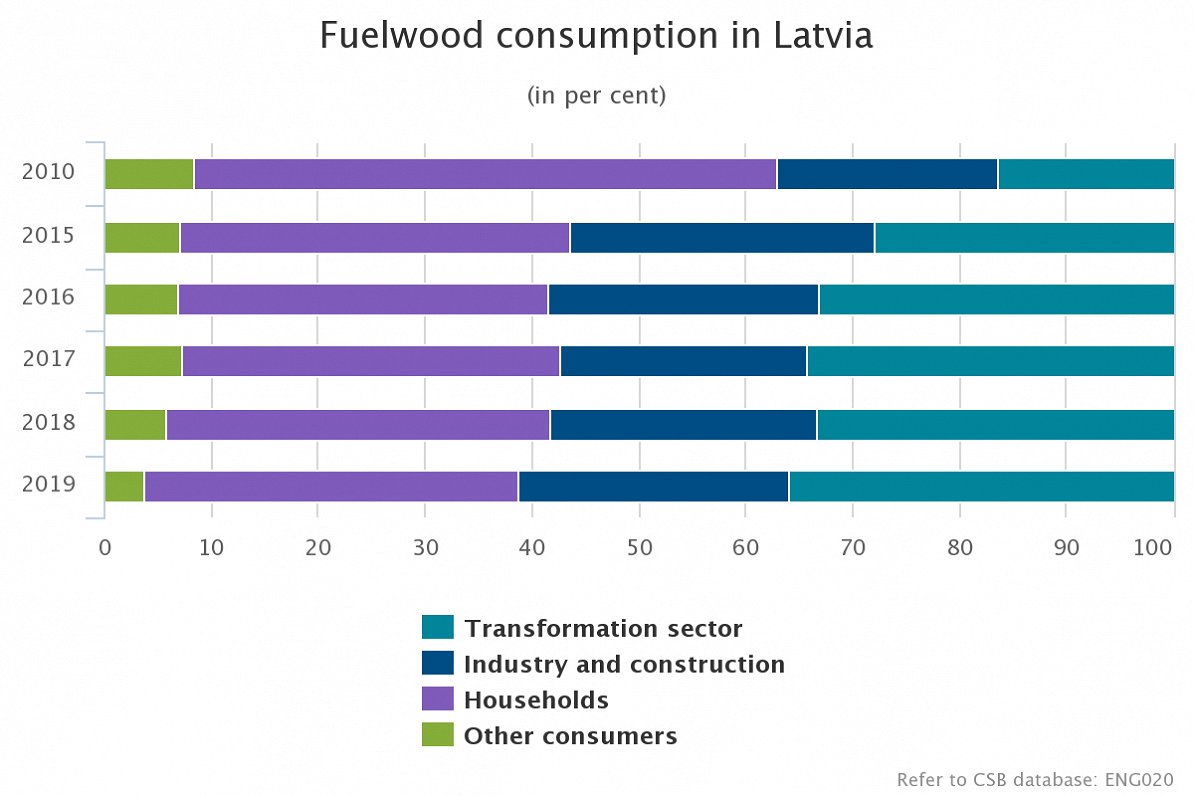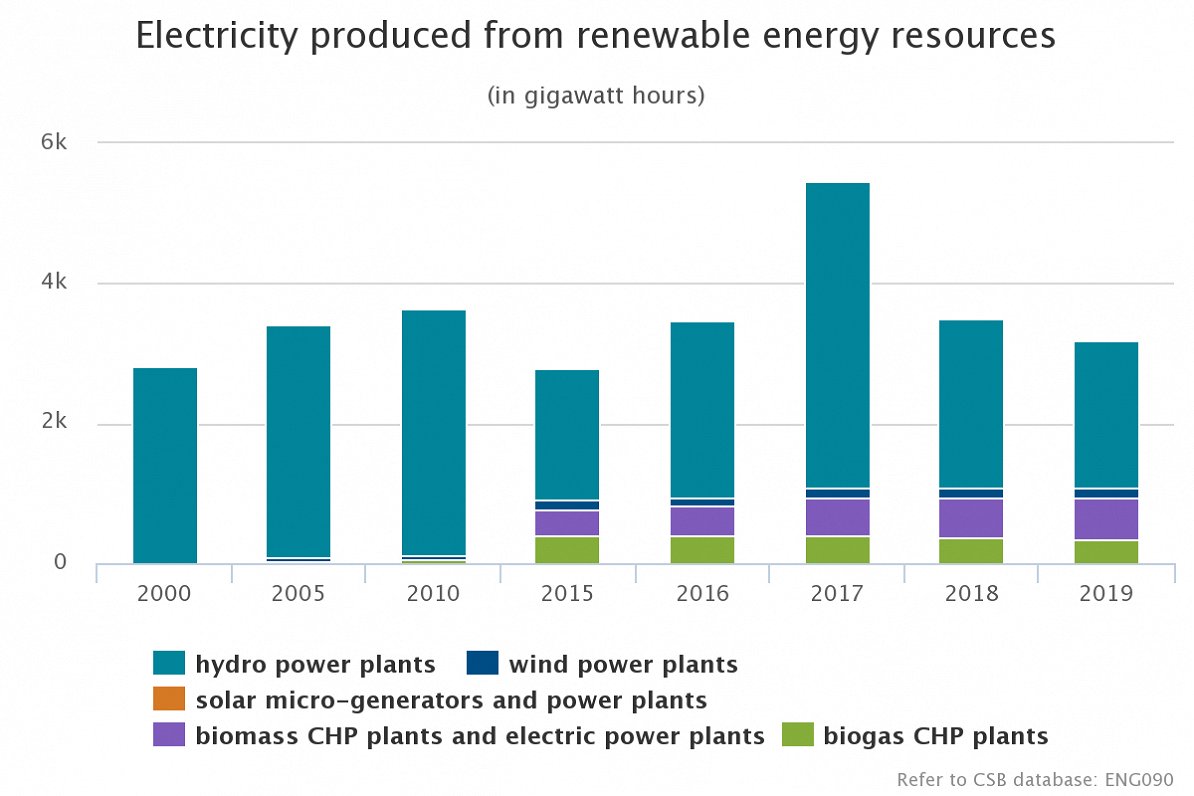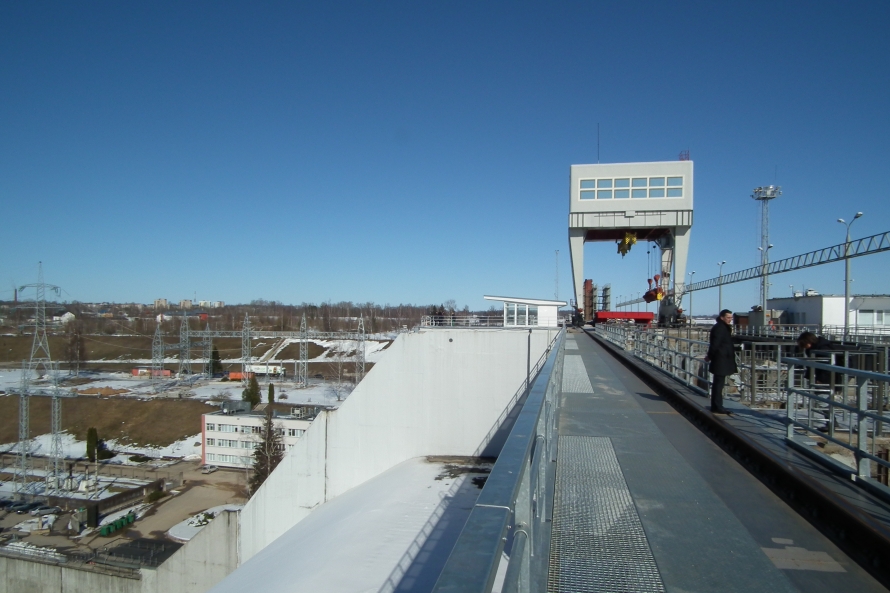Data show that in 2019 gross consumption of renewable energy sources (RES) in Latvia amounted to 69.9 petajoules (PJ). During the five years (2015–2019) consumption RES of has risen by 17.6 %. Reduction in the consumption of RES was influenced by the drop in the volume of energy produced in hydro power plants, which is explained with lower precipitation than it was in 2018.
Fuelwood (firewood, wood waste, wood chips, wood briquettes, pelleted wood) and hydro resources in Latvia are used the most extensively. Increasing consumption of local resources, energy dependency from imported energy resources falls from 63.9 % in 2005 to 44.3 % in 2018.

Fuelwood takes 88.5 % of the RES consumption of energy resources
In 2019 the share of fuelwood in the gross consumption of RES comprised 88.5 % (in 2018 – 88 %). Consumption of biogas (landfill gas, sewage sludge gas, and other biogas) comprised 3.4 PJ in 2019, which is 7.3 % less than in 2018 (3.6 PJ), and during the five years consumption of biogas has reduced by 8.1 % or 0.3 PJ.

Over the year, volume of electricity produced from RES dropped by 8.8 %
In 2019, 6 438 GWh of electricity were produced in Latvia, of which 3 190 GWh were produced from RES, and, compared to 2018, the volume has dropped by 8.8 %. Last year, 4 174 GWh of electricity were generated in CHP plants, of which 22.2 % were produced from RES (biogas and biomass). During the last five years, the volume of electricity produced in biomass electrical power plants and CHP plants rose from 378 GWh to 575 GWh (by 52.1 %), but the volume produced in biogas CHP plants reduced – from 392 GWh to 353 GWh (by 9.9 %).
Electricity produced in wind power plants increased by 30 GWh
In 2019, compared to 2018, primary electricity produced from RES fell by 11.4 % or 1 PJ. Last year, hydro power plants produced 2 107 GWh, which is 13.4 % or 325 GWh less than in 2018. In wind power plants 152 GWh were produced in 2019, which is 24.6 % or 30 GWh electricity more than in the previous year, but in solar power plants – 3 GWh electricity, which is 3 times more than a year ago.
As use of electric buses, including trolleybuses, is increasing in public transport services sector and the number of electric passenger vehicles registered in Latvia is also growing, consumption of electricity by transport has also risen by 50 % or 14 GWh – in 2019 it reached 42 GWh, in turn, consumption of electricity in trams has remained unchanged.

Latvia has set a target to reach 40 % of the energy produced from RES in the gross final energy consumption until 2020. In 2018, Latvia had the third highest share of RES (40.3 %) in the energy consumption in the European Union (EU) after Sweden (54.6 %) and Finland (41.2 %), while the EU average indicator constituted 18.0 %.
In 2020 each EU member state had to ensure that energy produced from RES (biofuel, biogas, electricity produced from RES and consumed by transport) comprises at least 10 % of final consumption of energy in transport (in 2018, 4.7 % were reached in Latvia). However, share of RES on heating comprised 55.9 % in 2019, which is second highest indicator on heating after Sweden (65.4 %) among all EU member states. In the EU renewable energy comprised 19.7 % of gross energy consumed on heating and cooling.






























